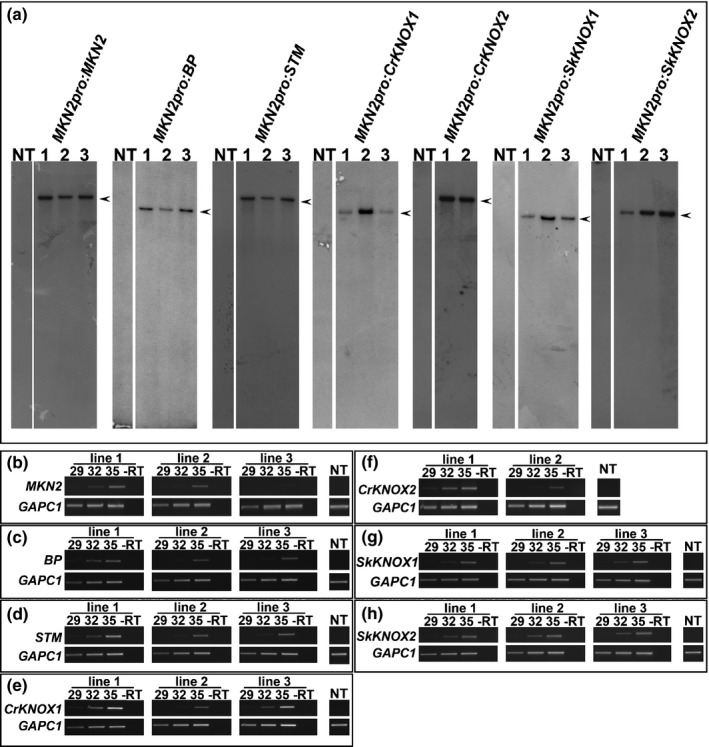Figure 2.

Transgene integration and expression in Physcomitrella patens mkn triple mutants. (a) DNA gel blot analysis of NdeI digested genomic DNA from mkn2;mkn4;mkn5 mutants transformed with MKN2pro:KNOX constructs. Blots were hybridized with a fragment of the blasticidin resistance gene present in the transgene construct (see Supporting Information Fig. S2). Hybridizing fragments were not detected in DNA samples from nontransformed mutants (NT), whereas 11.8‐kb (MKN2pro:MKN2), 10‐kb (MKN2pro:BP), 11.59‐kb (MKN2pro:STM), 9.9‐kb (MKN2pro:CrKNOX1), 11.78‐kb (MKN2pro:CrKNOX2), 9.42‐kb (MKN2pro:SkKNOX1) and 9.72‐kb (MKN2pro:SkKNOX2) fragments were detected in transgenic lines. (b–h) reverse transcription polymerase chain reaction (RT‐PCR) showing transgene transcript accumulation in mkn2;mkn4;mkn5 mutant plants transformed with (b) MKN2pro:MKN2, (c) MKN2pro:BP, (d) MKN2pro:STM, (e) MKN2pro:CrKNOX1, (f) MKN2pro:CrKNOX2, (g) MKN2pro:SkKNOX1 and (h) MKN2pro:SkKNOX2. GAPC1 was used as an amplification and loading control in each case. Amplifications were performed for 29, 32 and 35 cycles (as indicated) to ensure amplification in the exponential phase. Negative control reactions were carried out in the absence of reverse transcriptase (‐RT) and with cDNA isolated from nontransformed triple mutants (NT).
